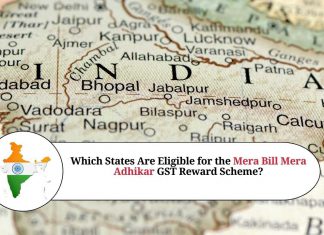Article Content:
- What is PFRDA?
- Who is Applicable for this NPS Scheme?
- Functions of PFRDA
- PFRDA NPS
- Intermediaries, PFRDA Stakeholders and NPS Trust
- Pension Fund
- Central Record Keeping Agency (CRA)
- CRA Functions
- Trustee Bank
- Trustee Bank Functions
- Point of Presence
- Custodian
- Aggregator
- Retirement Advisor
- ASP
- What Online Services Does PFRDA Offer?
- FAQs
What is PFRDA? Know Applicability and Its Functions
The Government of India has started the national project, Old Age Social and Income Security (OASIS) to examine policies to secure old age pension in the country. In order to secure all the new entrants of State/Central Government excepting armed forces, the government has replaced the above pension plan with the contribution pension plan.
Hence, the Union Parliament has formed the Interim Pension Fund Regulatory & Development Authority (IPRDA) in February 2003. It was started to develop, promote, and regulate pension distribution in the nation. It was established on a temporary basis to maintain the system till the permanent and final system is implemented and prepared with the approval of all parties in India, including the opposition.
Pension Fund Regulatory and Development Authority (PFRDA) is the permanent act and final system established on September 19, 2013 by the President. The PFRDA was under the President until 2014-15. Later on, it became a fully independent and autonomous regulatory body.
Who is Applicable for This NPS Scheme?
Initially, the Government of India started this pension scheme only for its employees. Currently, all Indian citizens and NRIs, including self-employed professionals are applicable for this pension fund. In this article, we are going to discuss PFRDA further as how it regulates and promotes the pension system in the country.
PFRDA Functions
As discussed above, PFRDA is a pension regulatory body which is focused on its development and promotion. Like IBBI, SEBI, RBI and IRDA, PFRDA is a quasi-government body and central autonomous regulator which has judicial, legislative, and executive powers. It controls and regulates the NPS and Atal Pension Yojana.
Here are some of the functions of PFRDA :
- Regulating National Pension System and other schemes applicable under PFRDA Act.
- Protecting the interest of pension fund users.
- Developing and regulating pension funds.
- Regulating and registering intermediaries
- Establishing grievance redressal
- Approving terms, schemes and norms for corpus management in pension funds
- Settlement of disputes in intermediaries and subscribers
- Promoting a regulatory organization with pension mechanism
- Regulating the assets which have been regulated
- Making subscribers and the general public aware and training intermediaries regarding retirement savings, pension and other issues.
- Conducting investigation, inquiries, and audit and calling for information about intermediaries and other pension bodies.
PFRDA NPS
PFRDA Act has introduced the National Pension System to collect and accumulate the contributions by subscribers in a separate pension account through several intermediaries. The contributions from the individuals are pooled together under NPS in a pension fund and then invested according to the approved guidelines related to the investment.
Usually, funds are invested in diverse portfolios, including corporate debentures, government bonds, bills and shares on the basis of subscribers’ decision. When it comes to quit, subscribers can also invest in life annuity through their pension fund which has been accumulated. As discussed earlier, the PFRDA is the governing body of NPS. As per Indian Trust Act, 1882, the PFRDA also set up an NPS trust to manage funds and assets under NPS for subscribers.
The PFRDA has appointed a Board of Trustees to handle the NPS Trust. The board of trustees handles the legal ownership of funds and trust. The Board has a maximum of 5 members and a Chairman. The NPS Trust manages the pension accounts with subscribers, approves several reports and documents, along with financials audited from several NPS trust intermediaries, evaluates and keeps track on operations of those intermediaries etc.
Intermediaries, PFRDA Stakeholders and NPS Trust
For management, collection, distribution and recordkeeping of accumulations, a lot of intermediaries have been appointed by PFRDA. Here are some of the PFRDA intermediaries
Pension Fund
The PFRDA has issued a certificate of registration to this intermediary as an authority for investing contributions, receiving them, and paying off the subscribers. Here’s the list of pension funds under NPS:
- Collection of funds from subscribers who can invest and who prefer auto allocation of their funds from trustee banks for investment purposes.
- Maintain proper accounts for schemes related to this intermediary.
- To form a risk management and investment committee
- To report operational activities regularly to NPS trust
- To declare Net Asset Value of the scheme at the end of the day and report to CRA or Central Record Keeping Agency to utilize the PRAN (Permanent Retirement Account Number) of the subscriber.
Central Record Keeping Agency (CRA)
The Central Record Keeping Agency or CRA is an agency which performs under PFRDA for accounting, record-keeping, customer service and administration for subscribers of Pension Fund. The CRA1 is the first Central Record Keeping Agency from PFRDA and CRA2 is the second. Employers can go for either CRA1 or CRA2 if there is a private company offering pension to the employee. Voluntary (non-employee) subscribers can go for CRA.
In case of subscribers registered under Atal Pension Yojana and government sector employees, the CRA will be the option for the respective government. Aggregator chooses CRA for NPS-Lite subscribers.
CRA Functions
- Serves all intermediaries as operational body under CRA and liaisons with all important outside agencies to perform commissioning and operations.
- Using contributions from the subscribers to the PRAN account.
- Issuing and dispatch of PRAN card, maintenance and digitization of PRAN database and record subscriber’s related transactions.
- Getting subscribers’ instructions and aggregating and passing the same to Pension Fund Managers and Annuity Service Providers and other intermediaries and aggregating the guidelines
- Timely allocating funds to the managers of pension funds and facilitating the accounts of credit subscribers.
- Providing call center services
- Offering services like consolidated account statements to the subscribers directly.
- Processing withdrawal/exit request of subscribers
- Providing central grievance control
Trustee Bank
It is both an intermediary and a bank for handling daily cash flow and offering banking services, receiving and transferring NPS funds from nodal offices to intermediaries like annuity service providers, pension funds, and others according to the guidelines. Since July 2015, Axis Bank has been a Trustee Bank and appointment is subject to PFRDA annual review and has validity for five years.
Trustee Bank Functions:
- To collect NPS funds received in cash and online from nodal offices.
- To reconcile the collected amount from subscribers and nodal offices.
- To help CRA for settlement with fund transfers
- To consolidate all the records of contribution and to prepare the confirmation file related to Fund Receipts.
Point of Presence
Point of Presence or POP is another intermediary body but it is connected electronically to CRA for transfer and collection of funds, pay out of funds, and instructions. Here are the PoP functions:
- Verify KYC documents and provide subscribers’ registration
- Collection and upload subscribers’ complaints and grievances from other intermediaries in CGMS of Central Record Keeping Agency, which routes the same to the concerned intermediaries.
- Processing initial contribution during registration
- Accepting contributions and remitting funds to the trustee bank.
Custodian
A custodian is a responsible person to secure the assets or securities under NPS or other schemes related to pension and rendering services like maintaining assets or securities accounts, collecting rights or benefits on assets or securities, and handling Domestic Depository activities. The PFRDA has appointed Stock Holding Corporation of India Ltd as a custodian.
Aggregator
It is another PFRDA registered intermediary which performs functions related to subscriber interface under Swavalamban or NPS Lite, including grievance redressal, processing contribution of subscribers to NPS-Lite, and managing changes to the database from subscribers.
Retirement Advisor
Any firm, individual person, trust, society, or company can be a retirement advisor under PFRDA authorized to provide consultations on pension schemes like NPS regulated by subscribers’ authority or group of persons.
ASP
The Annuity Service Provider is authorized to provide annuity payments at the time of periodic annuity payment/exit to the subscribers as per the annuity contract from the subscribers to address the potential subscriber queries regarding the annuities acquiring, grievance management of annuity buyers, and subscriber registration for investing in annuity.
What Online Services Does PFRDA Offer?
PFRDA has always been making operations easier with the best use of digitization for the subscribers. Here are the online activities provided by PFRDA to its subscribers –
- Contribution to PRAN account (excluding Atal Pension Yojana and NPS-Lite)
- Opening NPS accounts
- Activation of Tier-II accounts without any withdrawal limits and tax benefits
- Making changes to investment patterns
- Making changes to personal details
- Changing pension funds except for some corporate bodies and government subscribers
- Withdrawal/exit requests
- ePRAN print
- Filing complaints
- Download transaction statement (it’s hard copy is dispatched to subscribers in a year and computerized copy to email IDs which are registered with it)
FAQs
Q.1 Can I open an NPS account online?
Ans. Yes, you can open an NPS account online through online services provided by PFRDA.
Q.2 Can self-employed professionals open NPS accounts?
Ans. Yes, anyone can make contributions to an NPS account.









































